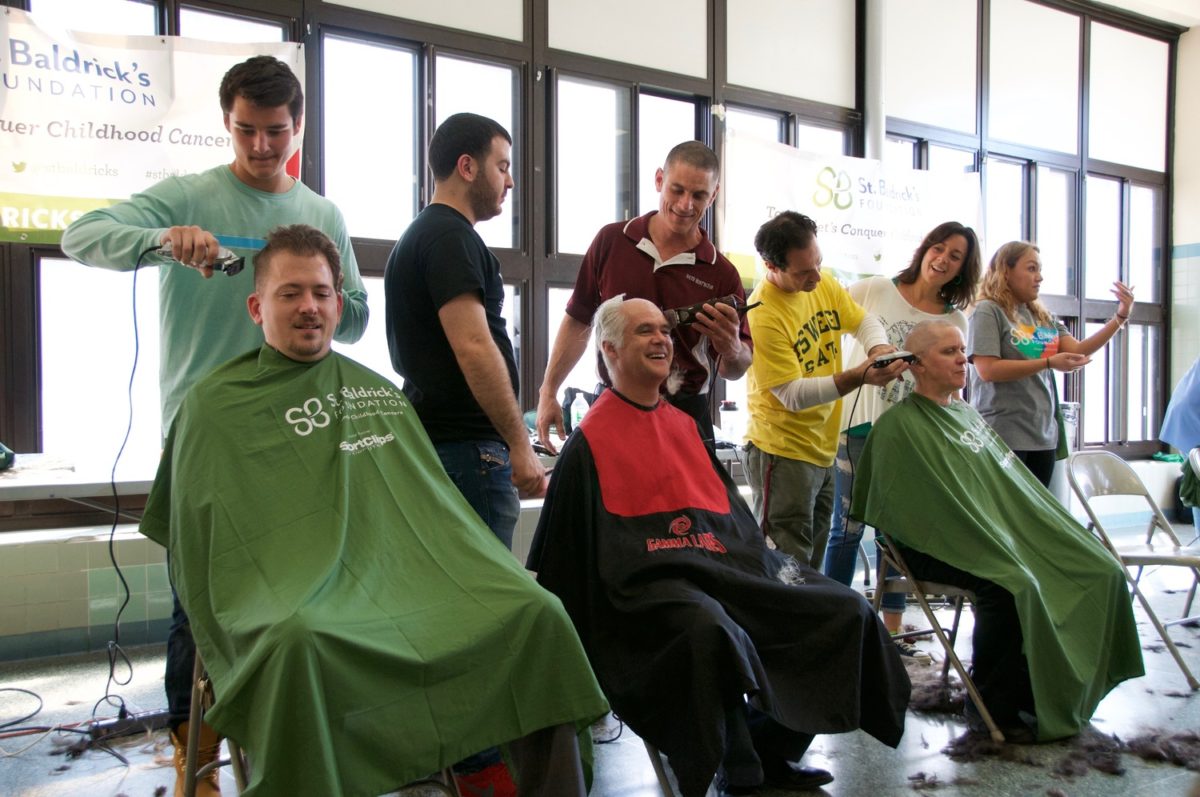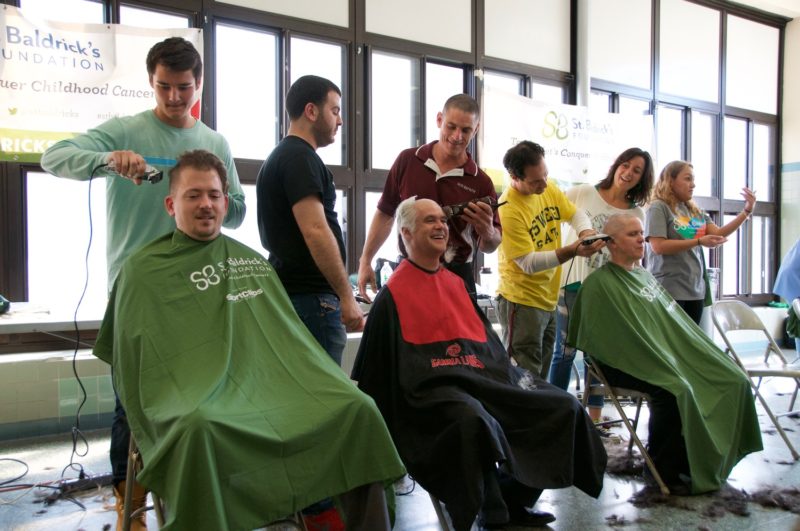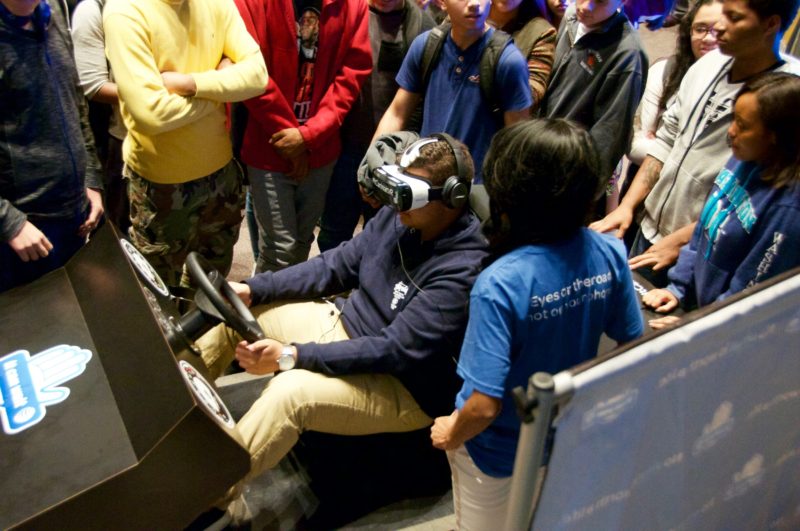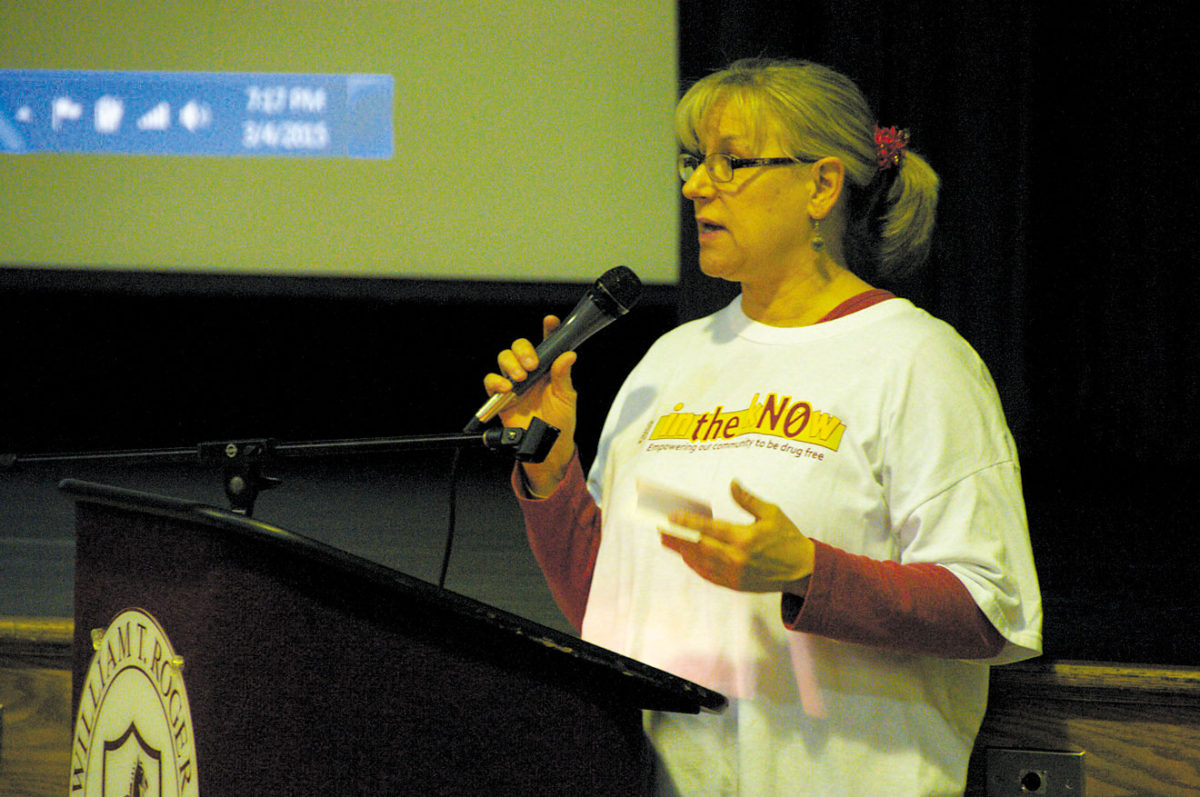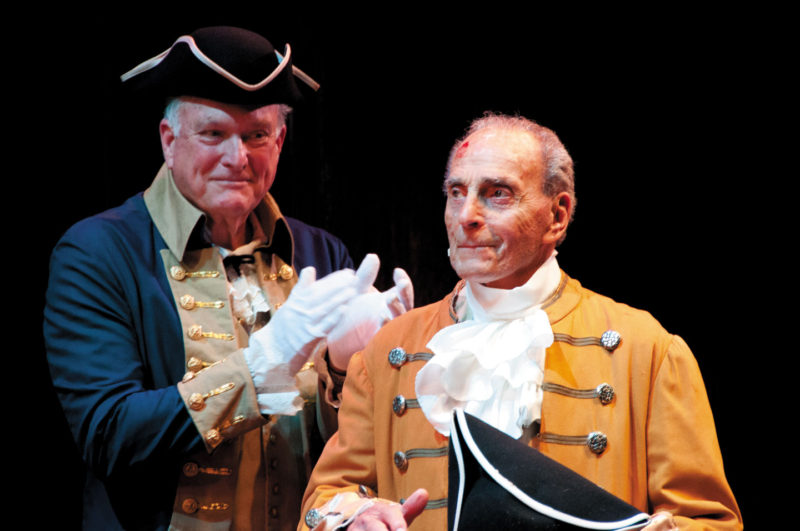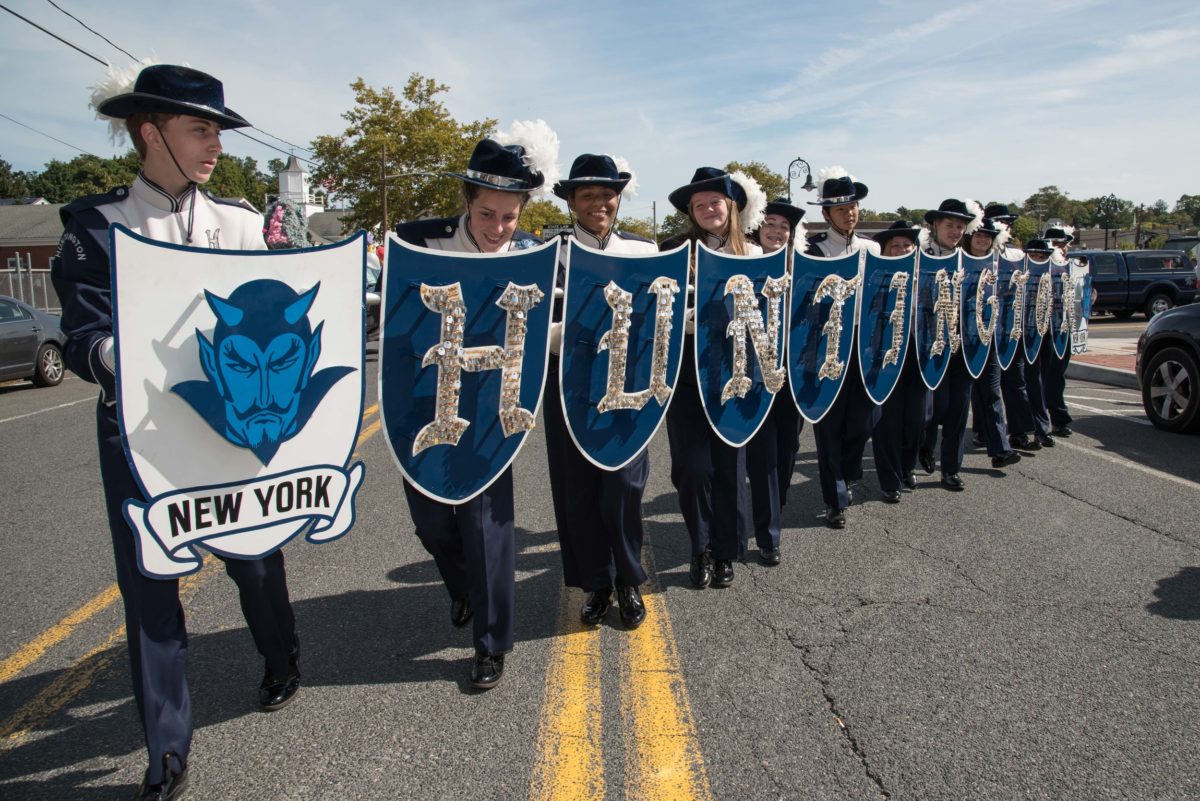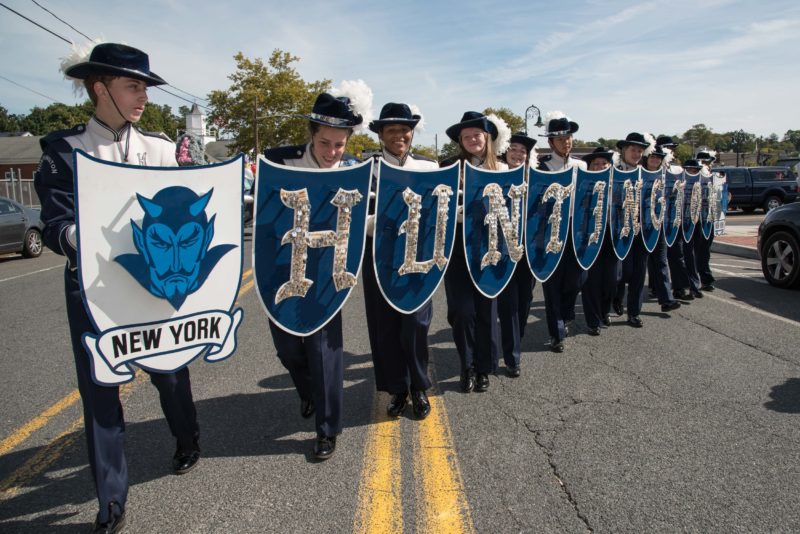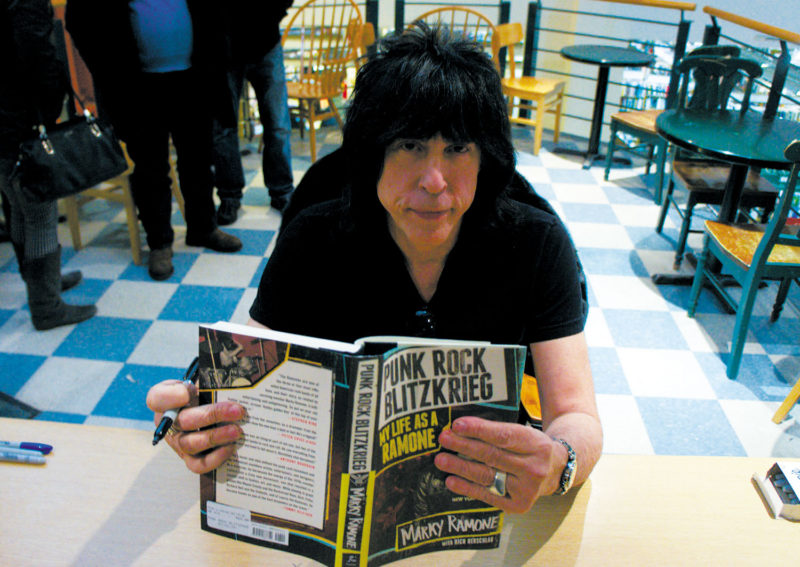
Long Islanders filled Book Revue storefront in Huntington Tuesday night for a special appearance from Marky Ramone, drummer of the seminal punk band the Ramones.
Born Marc Steven Bell, the 62-year-old Brooklyn native spent 15 years drumming for the iconic band and has played with a variety of musicians dating back to his high school years. He is the only surviving member of the iconic group, and visited the North Shore to take part in a Q&A session before signing memorabilia and copies of his new autobiography, “Punk Rock Blitzkrieg: My Life As A Ramone.”
Leading to the night’s event, roughly 100 rabid Ramones fans anxiously awaited Bell’s arrival. Among them was Smithtown resident Cynthia Cone, 42.
Cone said that when she was a teenager, she dated a drummer who turned her on to the Ramones, and it wasn’t long before she was hooked.
“Their shows were so high-energy,” said Cone. “If you listen to their bootlegs, it’s almost like you hear the countdown, and then it takes you a second to register what they’re even playing because they were so raw.”
Despite not achieving the success they deserved while the band’s original members were still alive, Cone said there’s no denying the Ramones’ impact.
“You hear so many bands like Rage Against the Machine, and even hip hop artists [credit] the Ramones. They were just such a huge influence across the board.”
Bell started playing drums in 1971 for the hard rock group known as Dust and would later audition for New York Dolls before working with Wayne “Jayne” County and Backstreet Boys. Later, he played with Richard Hell and the Voidoids, joining the band for the recording of their first record, “Blank Generation.”
In 1978, while drinking cheap beer at the legendary dive bar and venue CBGB, Bell was approached by bassist and soon-to-be band mate Douglas Glenn Colvin, also known as Dee Dee, and was asked to play drums for the band.
Asked about being on the road with the Ramones, Bell shared his experience touring America in the band’s van and likened it to being trapped in a floating mental institution on wheels.
“We had our trusty Ford Econoline 15-passenger van and we all had our assigned seats, Bell said. “We had a lot of quality time together and we were all different individuals — maybe that’s why the music was so great.”
Later, Bell discussed his band’s role in the 1979 Roger Corman-produced cult classic, “Rock ‘N’ Roll High School,” a musical comedy in which rebellious teens get even with their school principal against the backdrop of Ramones musical performances scattered throughout the film.
“[Film director] Allan Arkush came to New York and saw us play [and] he loved it. We toured our way from the east to west coast in 1979 and the next thing we knew, it was ‘Rock ‘N’ Roll High School,’” Bell said. “Making the movie was interesting [and] it was pretty funny seeing four aliens, me, Johnny, Joey and Dee Dee, in the movie amongst the normals.”
See the original article here.










